Custom frames ready for exhibit at the Museum of Church History and Art
By Ashton R. Young
Preparing for the upcoming Easter exhibit involves framing two of the four paintings to be included in the show. Since 1995, Al Young Studios has not only maintained its own frame shop, but has developed a unique approach to meeting its custom framing needs, particularly in terms of museum-quality frames.
Framing can be one of the great riddles that must be solved in the ongoing work of any studio. Not only is cost an important factor, but getting the desired result from even the best of framers can be a very difficult challenge. In the early years of trying to figure out how to meet our framing needs, we had the great good fortune to have a very fine experience with a world-class framer; however, businesses come and go, and it eventually turned out that the best approach for us was an in-house solution; not the best choice for everyone, but it worked for us.
The Studios' need for custom frames dates back to the early 1980s when Al's work focused on miniature pencil drawings. Framing costs were high, the sizes of the artworks to be framed were small, and Al's skill in woodworking and other handcrafts made framing a natural subject of interest. As his work moved from miniatures to 4 ft. x 8 ft. painted panels, the Studios' framing techniques also expanded.
Today, the Studios' need for large-scale frames is met by a methodology in which the frames are "stick built" from such materials as rough-cut alder and poplar milled in the Studios' woodworking shop, vendor and custom-milled mouldings, composition ornaments, metal leaf and sizing, acrylic paints and sealer, as well as wax. Creating the frames in-house has made it possible for the influence of the artist to be present throughout the presentation of the artwork.
Not all of the Studios' frames are stick built. A few consist of moldings that come to the Studios cut and assembled, to be gilded and antiqued or to be modified and then finished. Sometimes, for example, a shadow box is even added to a frame to provide a jewel case mounting in which to present a miniature lithograph
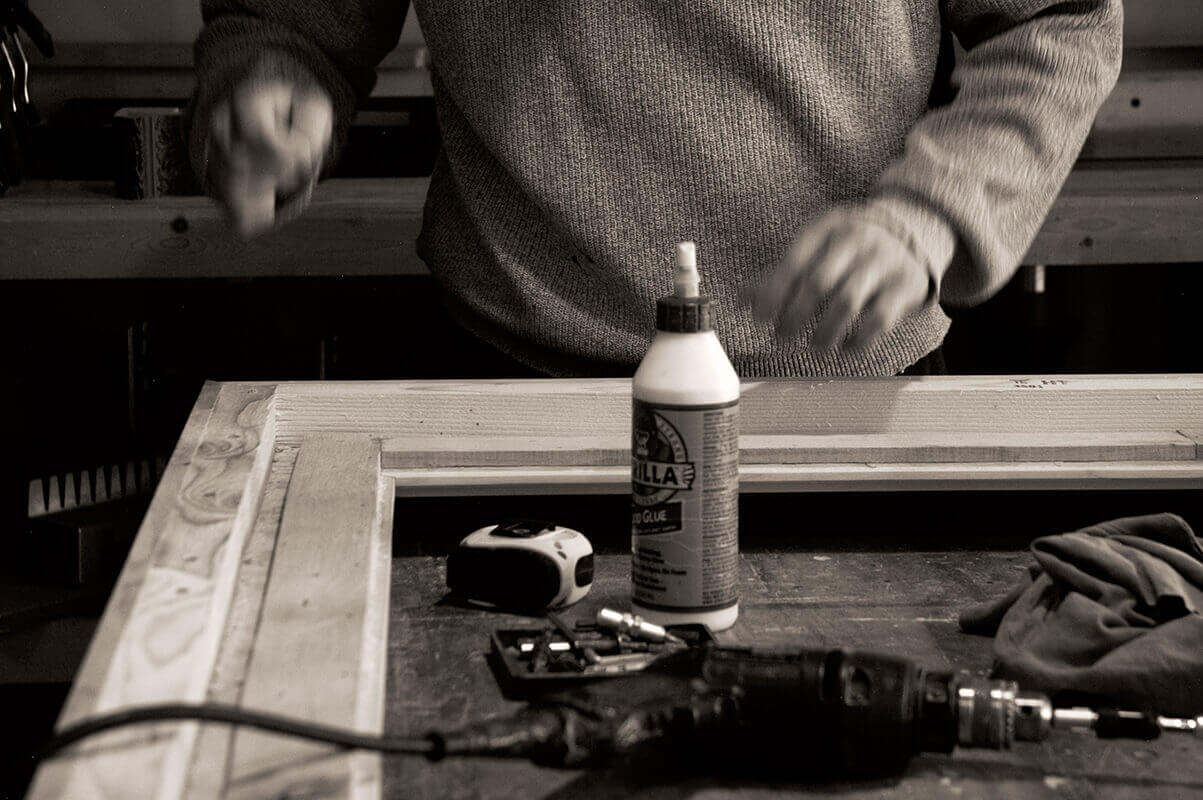 |
| The layered construction of each frame focuses primarily on durability, to provide as much protection as possible for the artwork. In addition to the glue and shear-strength of the fasteners used in frame construction, perhaps the most innovative aspect of the Studios' unusual approach to these frames is that the mitered joints, which typically constitute the weakest structural characteristic of a frame, are merely cosmetic. |
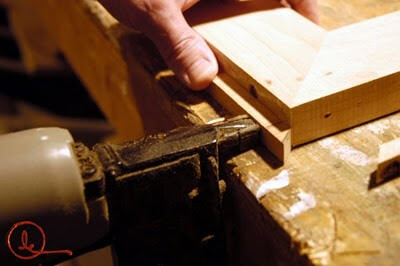 |
| Even the ledge that holds in place the support (panel) for the painting is made by hand. Here, it is attached to the perimeter of the alder liner surrounding the painting in the completed frame, and forms the dado along the inner edge of the frame mouldings. |
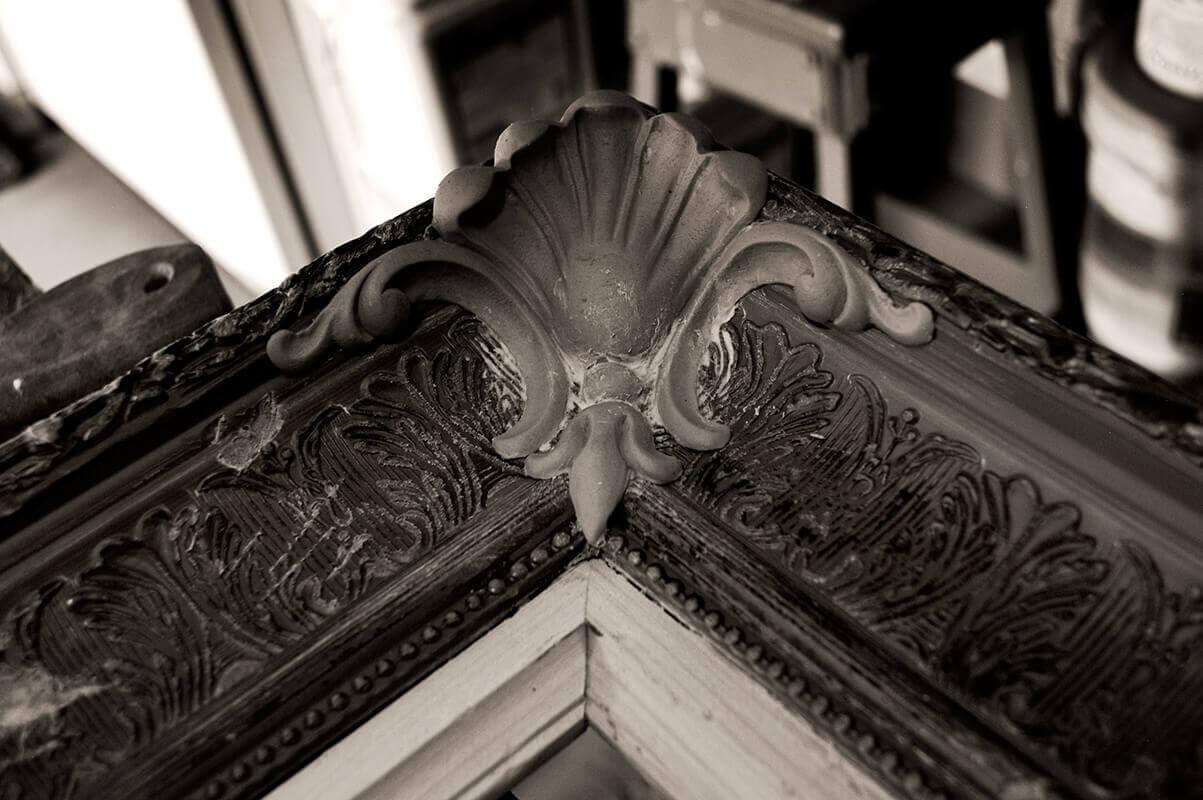 |
| For this particular frame, corner ornaments are installed in accordance with the artist's intentions concerning the relationship between the frame and the artwork. |
Upon completion of construction, the frame is prepared for gold leaf, which involves hand-work stages of distressing, preparation (similar to painting-prep), application of adhesive for the leaf, application of the numerous sheets of leaf, and sealing. All of this work is done by hand.
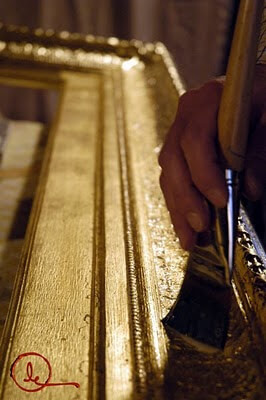 |
| The gold leaf newly applied to the frame must be sealed preparatory to antiquing lest subsequent stages in the process damage the leaf. |
Then, once the leaf has been applied and sealed, the frame is antiqued. Antiquing involves tinting the frame and is done with an eye toward ensuring that the color and texture of the frame present the artwork to best effect. Various techniques are employed in layering the antiquing-glazes, similar to glazes applied during an oil painting.
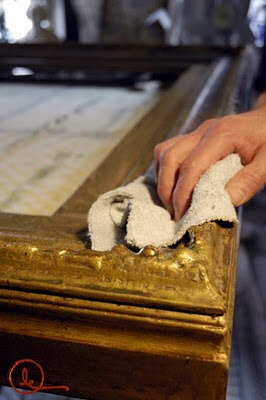 |
| After the antiquing, the entire frame is hand waxed and hand buffed. |
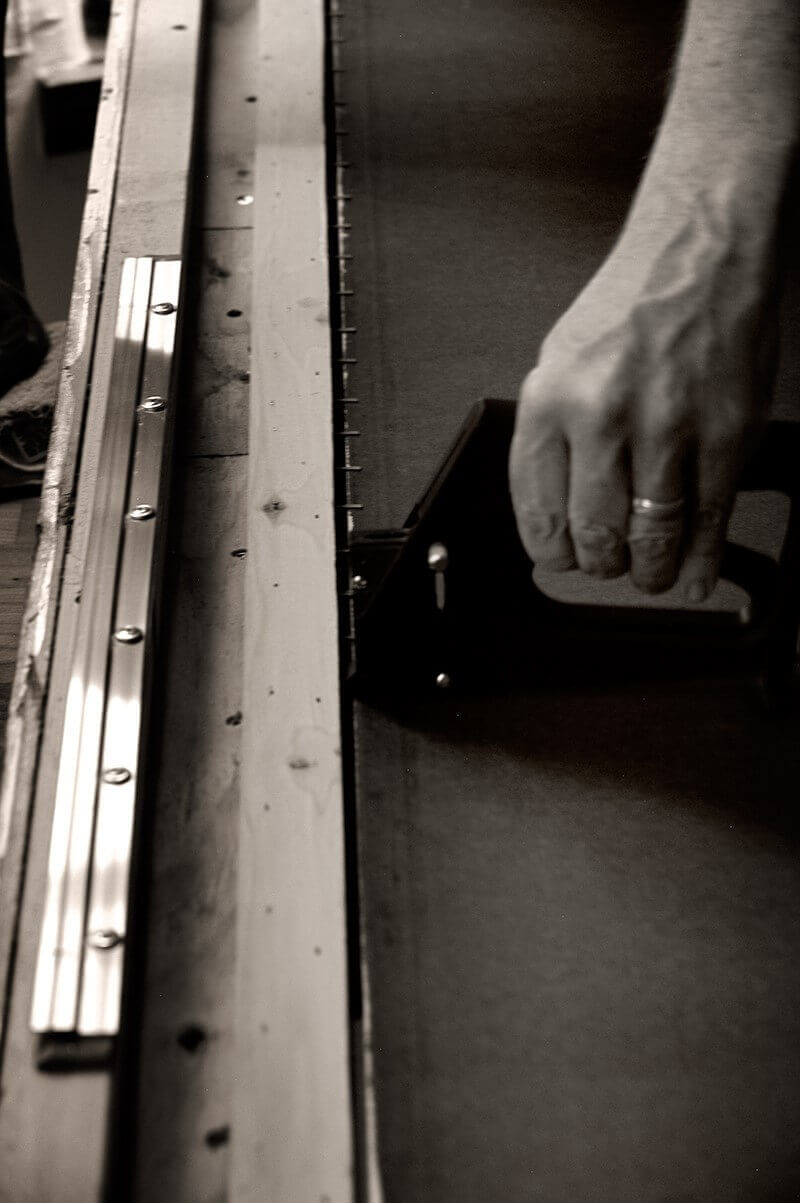 |
| In this photograph the staples holding in place the support for the painting are being fired into the dado. Also visible in this photograph is one of the French cleat runners that will hold the frame in place on the wall. Cleats are typically installed along the top and bottom edges of a frame. |
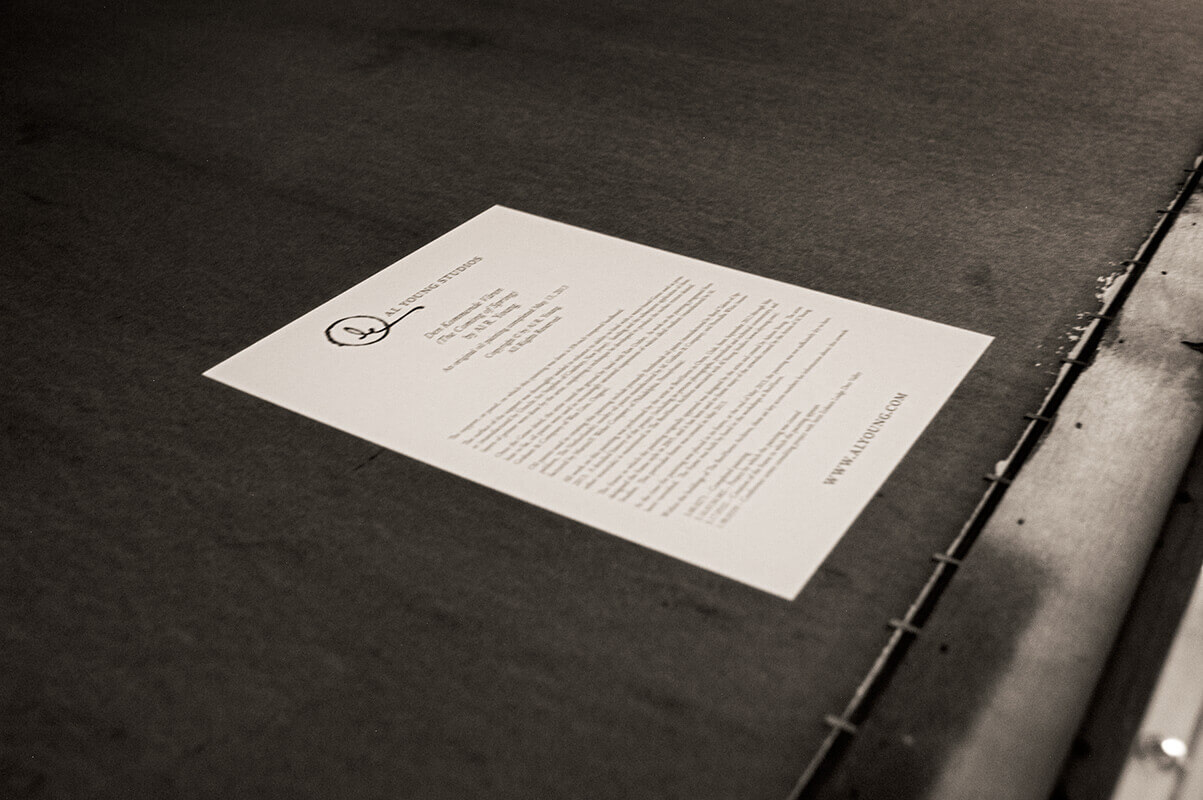 |
| An artwork and frame documentation-placard is affixed to the back of the support so that documentation follows the artwork. |
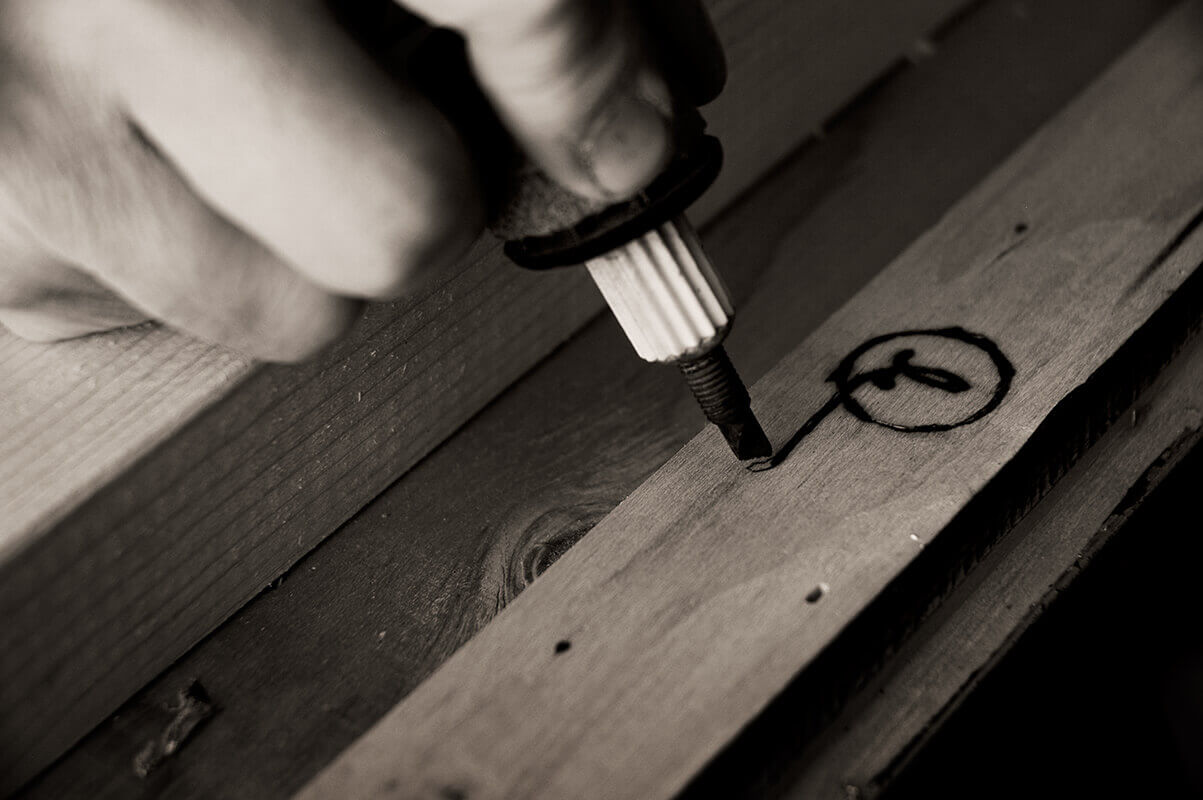 |
| The frame is signed, by hand, on the back. |
Browse articles by year: 2025 . 2024 . 2023 . 2022 . 2021 . 2020 . 2019 . 2018 . 2017 . 2016 . 2015 . 2014 . 2013 . 2012 . 2011 . 2010 . 2009 . 2008 . 2007 . 2006 . 2005 . 2004 . 2003 . 2002 . 2001 . 2000 . 1999 . 1998 . 1997 . 1996
Browse articles by topic: Art lessons . BenHaven Archives . Blank art diaries . Fine art photography . Framing . Illustration . Inspiration and creativity . Isles of Rune . Limited Editions Collection . My Fathers Captivity . News . Novellas . Oil paintings and prints . Operations announcements . Orders and shipping . Overview . Portfolios . The Papers of Seymore Wainscott . Project commentaries . Recipes by Nancy Young . Recommended reading . Recommended viewing . Temple artworks . The Storybook Home Journal . Tips and techniques . Tools supplies and operations
Browse articles by topic: Art lessons . BenHaven Archives . Blank art diaries . Fine art photography . Framing . Illustration . Inspiration and creativity . Isles of Rune . Limited Editions Collection . My Fathers Captivity . News . Novellas . Oil paintings and prints . Operations announcements . Orders and shipping . Overview . Portfolios . The Papers of Seymore Wainscott . Project commentaries . Recipes by Nancy Young . Recommended reading . Recommended viewing . Temple artworks . The Storybook Home Journal . Tips and techniques . Tools supplies and operations